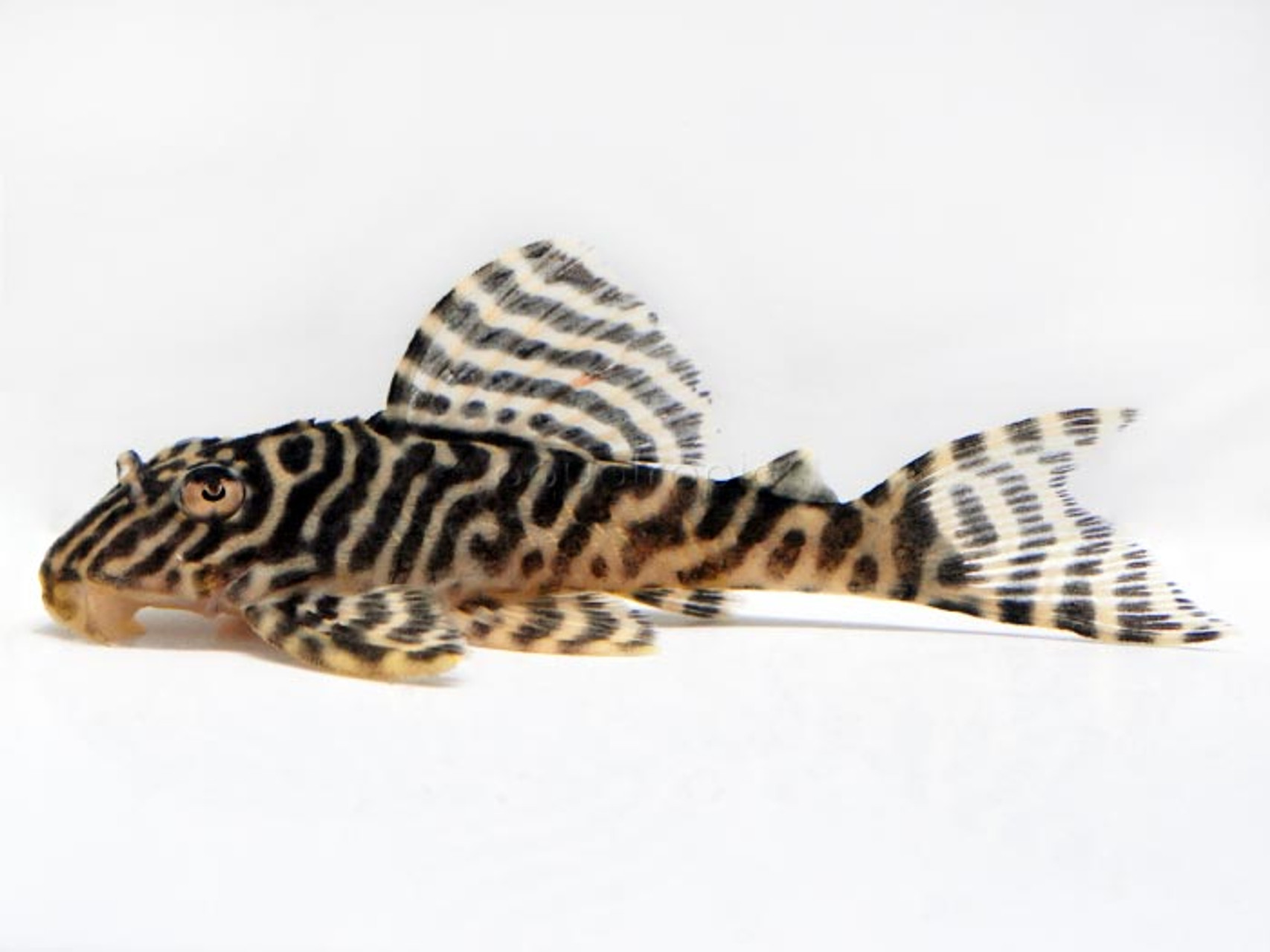Gypsy King Pleco (Hypancistrus sp. L066)

With its dense patterning of wavy black and white stripes, the Gypsy King Pleco is in many ways the poor man’s version of the exorbitantly expensive Zebra Pleco. Both species belong to the genus Hypancistrus and both originate from the Rio Xingu of Brazil, whose waters seem to be particularly replete with attractive loricariid catfishes.
Like so many aquarium fishes, the rather silly common name of this fish seems to bear little significance to the creature itself. Is it named for the melodic Latin beats of the Gipsy Kings, or is this merely a coincidence? You might also see this beast go by its alter ego, the King Tiger Pleco, or simply under its codename L066. To date, it has yet to be described with a formal scientific name, and several other similar and closely related species from these same waterways make definitive identifications challenging even for the experts.
As with other Hypancistrus species, this fish is far more carnivorous than the loricariids aquarists are more accustomed to. As far as cleaning algae off of an aquarium’s surfaces, the Gypsy King Pleco is of limited use, and so it should really be seen as more of an ornamental addition rather than as a fish which will assume janitorial duties. Like an exotic sports car, it exists more for looks than practicality. And, while it will scavenge to some extent on uneaten food, it is wise to offer sinking carnivore pellets, frozen bloodworms and even large pieces of shrimp to satiate the hunger of this exotic catfish.
Coming from the heart of Amazonia, warm acidic waters are recommended. Temperatures near 80℉ (or more) will be most natural, but this will also necessitate ample water flow to properly oxygenate the aquarium and more-numerous water changes to keep nitrogenous wastes to a minimum. Caves and crevices are needed, and, if kept in pairs or groups, will be used for laying eggs. Breeding is rare in captivity, however. Though small individuals are challenging to reliably sex, mature males stand out for their prominent odontodes on the head and pectoral fins. In addition, breeding males can turn almost entirely grey.